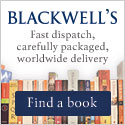Email Newsletter Tips and Strategies
Starting a successful email marketing journey requires more than just hitting "send." It's about knowing when to connect, what to say, and how to engage.
In this blog post, we're diving into the heart of email marketing, with practical tips and strategies specifically tailored for your email list.
Let's navigate the world of email marketing together and unlock the secrets that can transform your campaigns from ordinary to extraordinary.
Make sure you bookmark this post or save it on Pinterest, it will be easier to come back to when you’re struggling with creating a new email for your newsletter.
In this blog post, we will cover the following topics:
- The Basics of Email Deliverability
- Hacks for Creating Irresistible Email Subject Lines
- Email Frequency - When Should You Mail?
- Creating Anticipation
- Meeting Needs and Uncovering Preferences
The Basics of Email Deliverability
You’re spending a lot of time each week crafting emails to your subscribers, but none of that will do you any good if you don’t have a decent delivery rate. If those emails land in your potential customers’ spam folders, you don’t have much of a chance of making a sale or building a relationship with them. Here are 2 valuable tips to ensure your emails land safely in your subscribers' inboxes.
1. Promise & Deliver
The likelihood of securing a place in the primary inbox increases when your subscribers regularly open and engage with your emails. The best way to ensure that – outside of providing great content that your subscribers are looking for – is to set expectations from the beginning. Inform your subscribers from the outset about the frequency and timing of your email communications.
Once you’ve set those expectations do what you can to meet them. Yes, things happen every once in a while.
Try your best to keep your promise and send emails when your readers expect them. Doing this regularly will increase the chances of more people opening your emails.
2. Clean Up Your List Regularly
Another smart idea is to tidy up your list every so often. If people haven't been opening your emails for about six months, there's a good chance they might not be interested in what you're sharing anymore.
Check your autoresponder services manual or help files to see how you can go about deleting anyone who hasn’t opened an email from you in the past six months.
If your business has busy seasons, begin by removing anyone who hasn't opened your emails in the last year. By following these suggestions and paying attention to email deliverability overall, you ensure your subscribers are actually reading your emails, which, after all, is the goal of email marketing, isn't it?
Hacks for Creating Irresistible Email Subject Lines
The first thing you need to get right when it comes to email marketing is the subject line.
If your subscribers don't open your emails, it doesn't matter how great the email inside is. Sometimes, we spend a lot of time creating a fantastic message and then just put any subject line at the end. Take some time to think about the subject line. See what kind of headline makes more people open your emails.
Avoid “Spammy” Words
Stay away from using any words we all associate with spam emails. Words such as "sale," "discount," "coupon," "free," "limited time offer," and even "reminder" are used a lot. Even if they don't end up in the spam filter and actually reach your reader's inbox, there's a good chance they might get ignored.
Keep It Short
Try to get your point across in 50 characters or less. Pay attention to how your subject lines look on your own devices. Another good tip is to keep a collection of subject lines that caught your eye. Even if the emails are about something totally different, you can change them to fit your needs.
If you use ConvertKit or Moosend, utilize the A/B option in the email titles. This feature compares two email titles with each other and later informs you which one had the highest open rate. It then uses that title to send to the rest of your subscribers.
Adding a Personal Touch using a person's first name in emails has been done a lot in some places, but it still works for many of us. Give it a try and see if it works for you. Don’t overdo it, but use it when you really need it to open the email.
Based on the info you collect when your readers sign up, you can personalize other things, like where they're from, for instance, and even use it as an email title to get them interested.
Pique Their Curiosity
We're all curious creators, and It's tough to resist subject lines that sound interesting or only reveal part of the story. Adding "..." at the end of your subject line will also grab attention.
The idea here is simple. You want them to click and open the email to find out what the heck you’re talking about or how the story ends. Honestly, the top advice for creating interesting subject lines is to keep a collection of examples that got your email opened
Email Frequency - When Should You Mail?
Wouldn’t it be nice if there was a number or a schedule you could follow? While it would be great if there was research that suggested that mailing exactly every 5 days gets you the best results every time, there is no such thing. And there’s a very good reason for it.
Every market, every niche, every audience, and every person is different.
Although you can't please everyone on your list, there's a bunch you can do to make almost any email frequency work. First things first, don't wait too long between emails, or your readers might forget you. Sending less than once a month isn't a good idea. In most markets and business models, mailing less than twice a month isn't recommended either.
I tell you from first-hand experience, lately, I had to step away from my blog due to personal reasons, it was hard to get back to writing to an e-mail list and have high email open rates. Try to keep it consistent.
On the other end of the spectrum, you don’t want to go any higher than one email per day on average.
Sure, there might be days when you have a good reason to send a few emails, but on average, you don't want to email more than once a day, whether it's weekly or every two weeks. Begin by checking what you're doing currently.
Then decide how often you want to send emails. Do you build a stronger connection with your audience by emailing more often?
Do you want to increase your earnings by sending more email offers? Once you understand where you are and where you want to go, you can start making a plan to move from point A to point B.
What you don’t want to do is to go straight from emailing once every few months to daily emails. It will make your readers hit the spam button a lot. Instead, start with monthly emails for a couple of months, then let your readers know you have more to share with them and start mailing weekly.
After a few months, increase it to daily emails. Or, have a good reason for sending daily emails. For instance, if you typically send a weekly newsletter with occasional promotions, running a 15 or 30-day challenge for your readers is a great excuse to hit their inbox daily without seeming pushy or spammy.
Creating Anticipation
Again, the point is to pique your interest and get you to either buy the next issue or even better, get a subscription.
We can easily adapt this for email marketing and it works like a charm.
As your email wraps up, smoothly transition from today's topic to what's in store for the next email. Be a bit mysterious but grab their attention. For instance, if you're discussing why email marketing is crucial and the next email is about crafting subject lines for a higher open rate, you might say, "Watch out for Friday's email. We'll dive into THE most important thing in email marketing. If you miss this, nothing else matters." To add variety, hint at what's in the next email in the P.S. of your message.
If you have a weekly newsletter, include a section on what's coming in the next issue, like in a magazine. You can even encourage your subscribers to open a previously sent email to spice things up.
Let’s say you're writing a series of emails about a connected topic. At the start of your email, bring up something you talked about in the last one, then transition into today's topic, and finish with a subtle hint about what's next. It's really not necessary to incorporate foreshadowing in every email.
Sprinkle it in here and there where it makes sense. It also gives you a chance to pick up on in the subject line of your next email. Try using something like “As promised…” Even readers who missed your last email might be curious enough to open this one.
Meeting Needs and Uncovering Preferences
Start by establishing a relationship with your readers. Let them become familiar with you. Offer assistance so they begin to appreciate and trust you. Only then can you make an offer that convinces them to open their wallet and make a purchase.
Pay attention to your website stats. Programs like Google Analytics can give you a lot of information of where you’re readers came from, what page they landed on, and where they were on your site when they joined your list. That data along with demographical information will tell you a lot about your audience.
Imagine you're running a travel blog, and you've noticed some of your readers are looking for tips on stress-free travel. They express feeling anxious and getting worked up over small details.
The real issue might be a lack of proper planning or uncertainty about traveling to new destinations. Delve deeper to understand your audience. Sometimes what they ask for may not be the actual problem. On the other hand, it's beneficial to ask for their suggestions.
Lastly, take a stroll down memory lane and revisit your previous emails. Keep an eye on open rates, click-through rates, and unsubscribes. If a significant number of readers opened the email, it's a good sign they were interested. Clicking on additional content is even better. On the flip side, if you received many unsubscribes, it could indicate the topic was off or your language and the overall message didn't resonate with your audience.

.png)





.png)





0 Comments:
Post a Comment